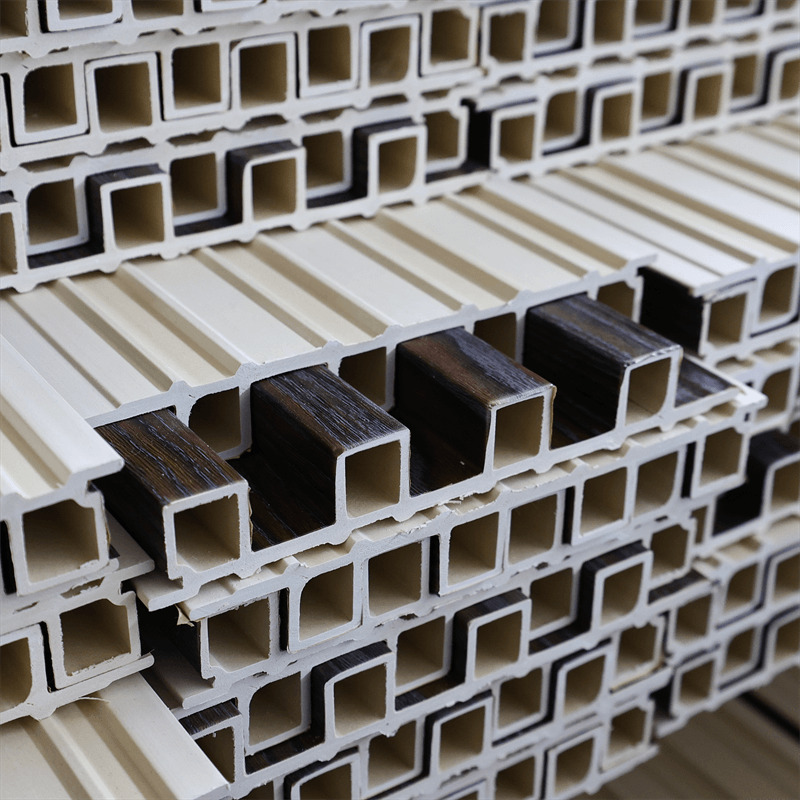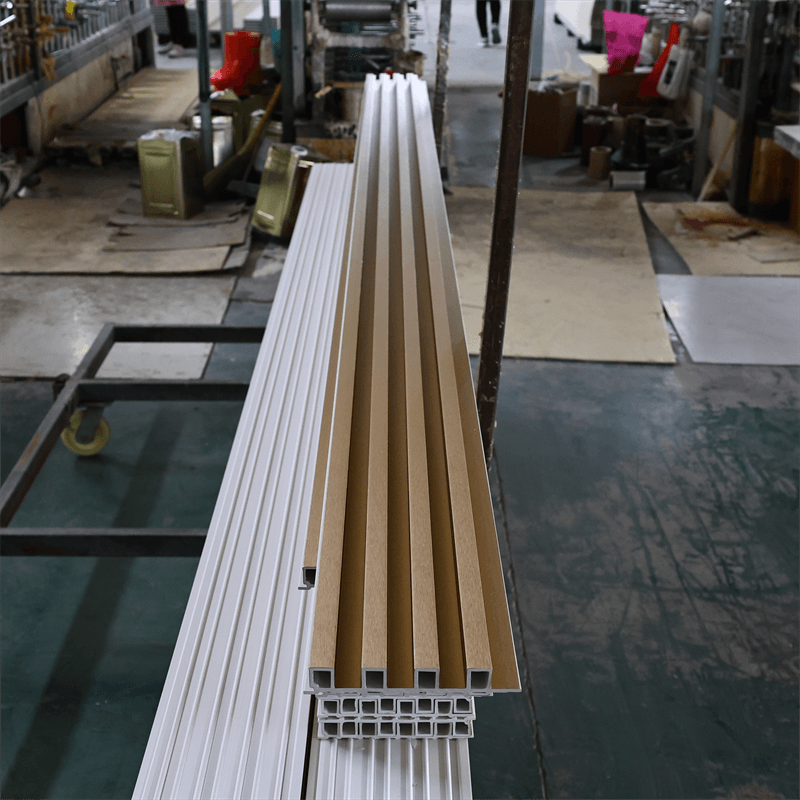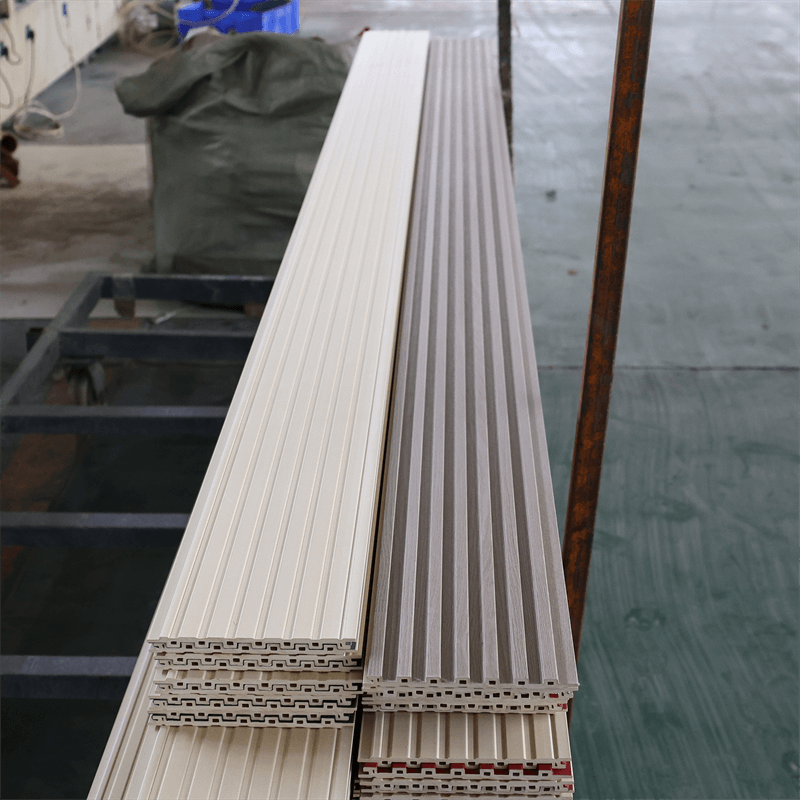In the construction industry, fire safety is of paramount importance.
The selection of building materials that possess fire-resistant properties is crucial for ensuring the protection of occupants and minimizing the spread of flames in case of a fire.
WPC (Wood-Plastic Composite) wall panels have gained attention for their numerous advantages, but it is essential to examine their fire resistance properties.
This essay delves into the fire resistance characteristics of WPC wall panels, exploring their composition, fire rating certifications, flame retardant additives, and potential applications in both residential and commercial settings.

I. Composition and Fire Retardant Additives:
- Wood and Thermoplastic Blend: WPC wall panels consist of a blend of wood fibers and thermoplastics, typically polyethylene or polyvinyl chloride (PVC). The wood fibers provide strength and natural aesthetics, while the thermoplastic matrix enhances durability. However, these materials are inherently combustible, necessitating the incorporation of flame retardant additives.
- Flame Retardant Additives: To improve the fire resistance properties of WPC panels, flame retardant additives are introduced during the manufacturing process. These additives act to inhibit or delay the combustion process, reducing the material’s flammability. Common flame retardant additives include halogenated compounds, phosphorous compounds, and intumescent additives, which expand and form a protective char layer when exposed to heat.
II. Fire Rating Certifications and Testing:
- Fire Rating Standards: WPC wall panels undergo rigorous testing to determine their fire resistance capabilities. Various international fire rating standards are used to evaluate their performance, such as the ASTM E84 (also known as the Steiner Tunnel Test) and the EN 13501 classification system. These standards assess critical factors such as flame spread, smoke development, and heat release.
- Fire Performance Classes: WPC panels are assigned specific fire performance classes based on their performance in testing. These classes range from A1 (non-combustible) to F (no performance determined). The assigned class provides an indication of the panel’s fire resistance and helps architects, designers, and regulatory bodies make informed decisions regarding their use in building projects.
III. Fire Resistance and Safety Benefits:
- Reduced Flame Spread: The incorporation of flame retardant additives in WPC wall panels helps reduce the speed at which flames spread across the surface. This characteristic is crucial in limiting the fire’s progression and minimizing the potential for extensive damage.
- Low Smoke Development: In the event of a fire, smoke inhalation is a significant threat to occupants. WPC panels with effective fire resistance properties produce minimal smoke during combustion, reducing the risk of smoke-related injuries and facilitating safe evacuation.
- Char Formation and Heat Insulation: The presence of flame retardant additives in WPC panels promotes the formation of a char layer when exposed to heat. This char layer acts as a protective barrier, slowing down the combustion process and providing heat insulation. It helps prevent the rapid spread of flames and allows for additional time for firefighting efforts and evacuation.
IV. Potential Applications and Considerations:
- Residential Spaces: WPC wall panels with fire-resistant properties find applications in residential spaces, providing homeowners with peace of mind regarding fire safety. They can be used in living rooms, bedrooms, and hallways, adding aesthetic appeal while ensuring a higher level of fire protection.
- Commercial Settings: In commercial buildings, fire safety regulations are stringent, and the use of fire-resistant materials is crucial. WPC panels with appropriate fire resistance certifications can be applied in offices, hotels, retail spaces, and public areas, contributing to a safer environment for employees and customers.
- Maintenance and Inspection: While WPC wall panels offer fire resistance properties, it is important to note that regular maintenance and inspections are necessary to ensure their ongoing effectiveness. Regular cleaning and periodic inspections by professionals can help identify any issues that may compromise the panels’ fire resistance capabilities.
The fire resistance properties of WPC wall panels make them a viable option for construction and design projects that prioritize fire safety.
Through the incorporation of flame retardant additives and adherence to rigorous testing standards, WPC panels demonstrate reduced flame spread, low smoke development,
and the formation of a protective char layer. These characteristics contribute to the overall fire resistance and safety benefits of WPC panels, making them suitable for use in both residential and commercial spaces.
When properly maintained and inspected, WPC wall panels provide an added layer of fire protection, offering peace of mind to occupants and enhancing the overall fire safety of buildings.

In conclusion, the fire resistance properties of WPC wall panels make them a reliable choice for construction projects that prioritize fire safety.
Their composition, which combines wood fibers and thermoplastics, requires the incorporation of flame retardant additives to enhance their fire resistance capabilities.
Through rigorous testing and adherence to fire rating certifications, WPC panels are assigned specific fire performance classes that indicate their ability to limit flame spread and smoke development.
The benefits of using fire-resistant WPC wall panels extend beyond reduced flame spread and low smoke development.
The formation of a protective char layer provides additional heat insulation and slows down the combustion process, allowing for improved fire containment and evacuation procedures.
These properties make WPC panels suitable for a range of applications in residential and commercial spaces, adding aesthetic appeal while prioritizing fire safety.
However, it is important to emphasize that regular maintenance and inspections are crucial to ensure the ongoing effectiveness of fire-resistant WPC wall panels.
Proper cleaning and periodic inspections by professionals help identify any potential issues that may compromise the panels’ fire resistance capabilities.
By incorporating fire-resistant WPC wall panels into construction projects, architects, designers, and building owners can enhance fire safety measures and provide occupants with added protection.
The use of these panels in residential and commercial settings contributes to a safer built environment, offering peace of mind and a higher level of fire protection.
As the construction industry continues to prioritize fire safety, the utilization of fire-resistant WPC wall panels proves to be a valuable and responsible choice.

